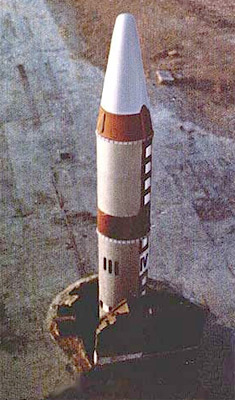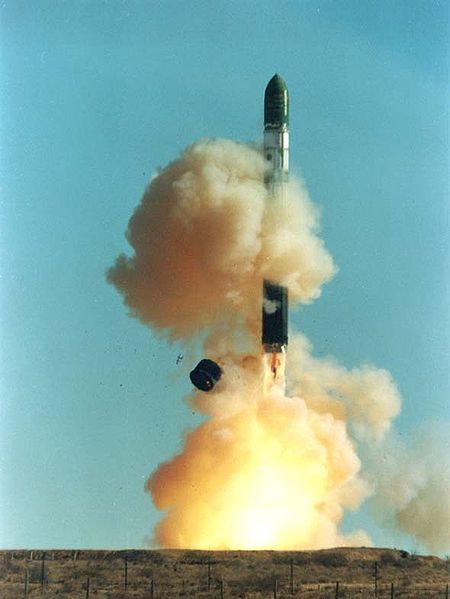R36M (SS-18 Satan) Russian Intercontinental Ballistic Missile
This is the missile that demolished almost all the West's bargaining power and ability to deter aggression. The largest missile in the world, its appearance was not unexpected as a modern successor to SS-9; but nobody in the West was prepared for its frightening accuracy, which, in conjunction with by far the most formidable warheads(s) in history, renders any practical degree of hardening a waste of effort. The DoD view is that this chilling capability has been demonstrated "four to five years earlier than expected". SS-18 is cold-launched from a silo of new design, though this is often installed at existing SS-9 launch complexes. There are two stages of storable liquid propulsion and separate computer-controlled post-boost propulsion for the reentry vehicle of MIRVs. Throw weight is estimated at 30 percent greater than for SS-9, and this is multiplied in effectiveness dozens to hundreds of times by the truly remarkable guidance accuracy which in tests in 1977-1978 averaged about 180 meters. According to DoD the Minuteman force is vulnerable as soon as large warhead CEP is brought within 370 meters. The Mod 1 SS-18, which reached IOC in 1974, has a single reentry vehicle with a yield estimated at 25 to 50 megatons, and most of the 80+ missiles deployed in mid-1978 are thought to be of this type. Probably any of them could be converted to Mod 2 standard, which has eight MIRVs with a yield put at 2 megatons each (another estimate is eight to ten of 1 megaton, but eight was the number invariably seen on the intensive Mod 2 test program in 1975-1976). Mod 2 entered service in 1976, but at a low rate of deployment. Mod 3 has a single reentry vehicle, lighter and more accurate than Mod 1 and giving even longer range. Salt 1 permits the Soviet Union to deploy 310 of these terrifying weapons.
Dimensions: Length about 121 feet 4 inches; diameter about 10 feet 6 inches.
Launch weight: About 485,000 pounds.
Range: Estimated at 7,456 miles; Mod 3 greater.

